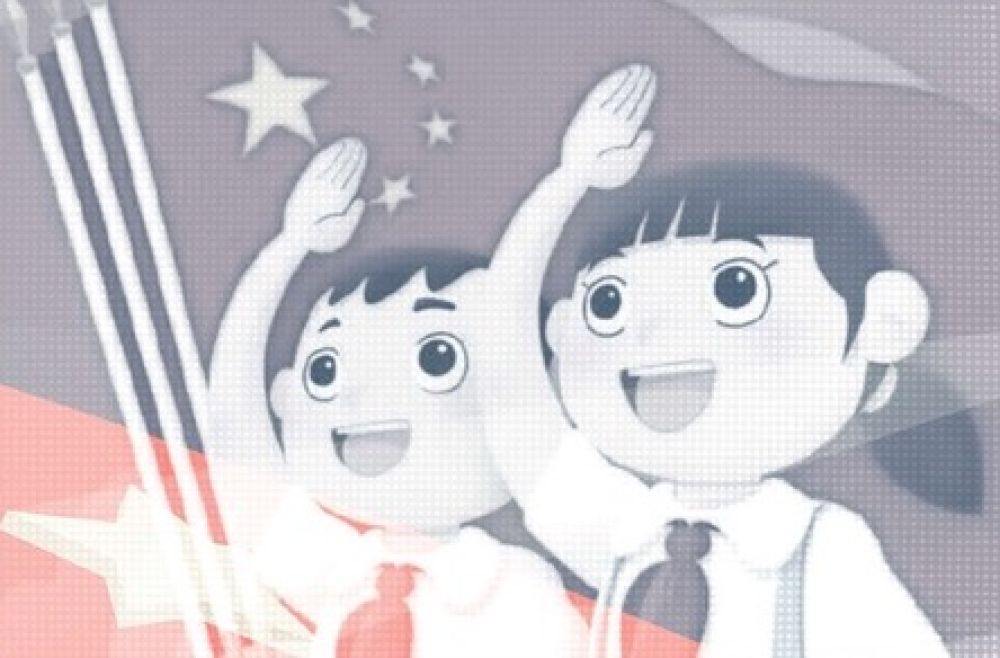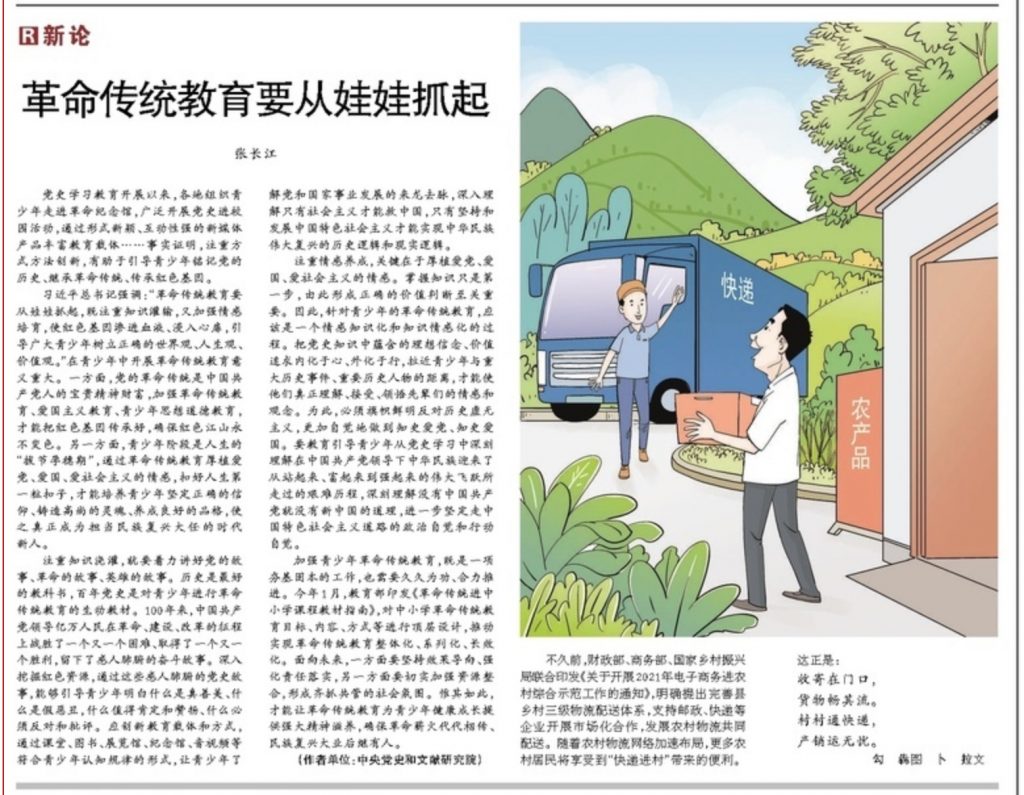Tracking Control
Our Color Must Not Fade

As China marks the centennial of the Chinese Communist Party this year, patriotism and love of the Party have remained central themes across the country. “Our republic is red,” Xi Jinping has said, “and our color must not fade.”
One key focus of the Party’s campaign to secure its position at the center of Chinese life and identity has been the nation’s youth. One of the most commonly seen phrases in Chinese schools in recent months has been “transmitting red genes, telling China’s story well (传承红色基因, 讲好中国故事).
In late May, a high school in Xianyang held a “sharing session” (分享会) on this theme. The audience sat through student-led Powerpoint presentations on the nation’s past, celebrating revolutionary stories and figures, and of course sharing Xi Jinping’s remarks on the importance of drawing lessons from the past.

On June 5, close to 2,000 students from Chongqing University of Technology were taken on a tour of an exhibition to the spirit of Red Crag, a semi-factual 1961 novel set during the Chinese Civil War that “played a critical role in the heroism culture of the Mao era.” A news release from the university, employing a favored Xi-era phrase for pro-Party positivity, said that students had “gathered more positive energy” (收获了更多正能量) through the visit, and that they could therefore become a “new generation of youth being of use to society.”

State media have also been publishing short themes from primary school students on the topic of “transmitting red genes, telling China’s story well,” like this recent one at The Paper, in which a first grader from Hebei province relates the story of Little Hero Yu Lai (小英雄雨来), a fictional tale written in the 1940s by Guan Ye (管桦), about a boy who leads a troupe of children in resisting the invading Japanese. Guan’s tale was published in the People’s Daily on April 4, 1949, under the title, “Yu Lai Is Not Dead” (雨来没有死). April 4 was marked as Children’s Day in China from 1931 through to the designation of International Children’s Day (June 1) by the Soviet Union in November 1949.

All across the country, students of all ages are being engaged in similar programs to advance “red education” (红色教育), urging them to celebrate the glories of the CCP, its courageous past, and its central role in Chinese life today.
Back in February, the Ministry of Education issued its “Guide to Introducing Teaching Materials on the Revolutionary Tradition Into the Primary and Secondary School Curriculum” (革命传统进中小学课程教材指南), which called for the nationwide implementation of Xi Jinping’s directive to “begin education in revolutionary traditions from childhood” (革命传统教育从娃娃抓起). The next month, the ministry announced a campaign of education in Party history for primary schools at every level across the country. The campaign, “Studying Party history from primary, forever walking with the Party” (从小学党史, 永远跟党走), was designed specifically for the commemoration of the CCP’s centennial. It outlined teaching priorities for local governments and schools, and pointed them to resources like this website, which offers short historical videos produced by the People’s Daily on such topics as “peaceful co-existence” and the “peaceful liberation of Tibet.”
While campaigns of education on CCP history have dominated the headlines this year, the push to double down on history to consolidate the Party’s central position in fact goes back to the second half of the Hu Jintao era. In the Xi era, the phrase “education in the revolutionary tradition must start at childhood” (革命传统教育要从娃娃抓起), which made it into a headline in the People’s Daily yesterday, dates back to a speech Xi Jinping gave in April 2016 on a visit to a revolutionary museum Anhui province’s Jinzhai County. Speaking almost graphically about the need to pass on “red genes” to the next generation, Xi said in that speech: “Education in the revolutionary tradition must begin with children, focusing not just on inculcation with knowledge but also the strengthening of emotional cultivation, so that red genes seep into the blood, and soak into the heart.”

The 13th Five-Year Plan, which established the framework for government policies from 2016 through 2020, explicitly mentioned the development of “red tourism,” an endeavor that picked up pace during the period. According to the “2021 Red Tourism Development Report” (2021红色旅游发展报告), released earlier this week, consumption in the red tourism industry reached 1,287 RMB per capita in 2020, a year severely impacted by the Covid-19 pandemic. The report estimated that the total contribution of the red tourism market to China’s economy has already surpassed one trillion yuan each year, “effectively fueling the revitalization of old revolutionary areas.”





















